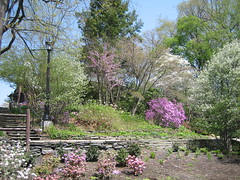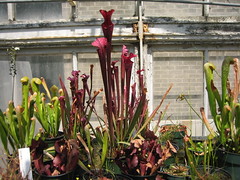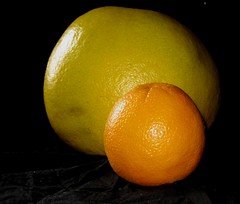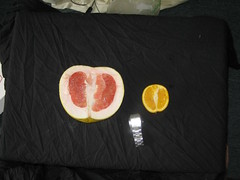After all the time I spent taking pictures of the campuses where I interviewed, I thought it’d only be fair to put up pictures of my alma mater (can I call it that yet, or do I have to wait until I ACTUALLY graduate?) Anyway, my timing worked out well and I got to document the campus on the best spring day I can remember from the past four years. Of course it had to happen a few weeks before I left for home, and thence to grad school. I think I’ve talked to everyone who reads this already, but if we haven’t talked in the last few weeks, I finally decided to accept the offer of UC-Berkeley’s plant biology program. For a summary of my visit to Berkeley, see Arriving in Berkeley, Another Day of 1000 interviews, Second Night … In Berkeley and Wrap up in Berkeley. This weekend I’ll be flying back home to be best man at the wedding of a good friend of mine. There may or may not be pictures afterwards. But here are a couple of examples of Cornell in the springtime (for more pictures you can either click on these pictures, or the thumbnail pictures on the right hand menu to visit my flickr account):


And this isn’t really a cornell specific picture, but it’s a Cobra Lilly, and that’s just cool!:

April 29, 2008
Cornell Pictures on Flickr
April 16, 2008
April 14, 2008
News From Xinjiang

Hannah just got back from spending her spring break in Xinjiang (the far west portion of China). She was originally planning on going to Tibet, but, when things deteriorated there, she was forced to change plans. Though there were some stories of unrest and riots in Xinjiang as well, she had a great trip and made it safely back to east China (the part with all the giant cities and factories). It sounds like quite the place, containing giant mountains and the second lowest place on the face on the planet. She even got to drive along the silk road! But I won’t say anymore. That way she’ll be able to tell you her stories herself. She was nice enough to let me co-opt two pictures from her week in Xinjiang to post here, the one above and one with a pair of Bactrian Camels (the two humped kind).

April 9, 2008
Update on Electoral Strength
For anyone who was interested by the map I posted a while ago comparing the electoral strength of Hillary Clinton and Barack Obama vs John McCain, the site where I pulled my raw data from is now doing the same sort of comparison, with updated numbers, and only looking at states that aren’t safely Democratic or Republican, regardless of the nominees. I am satisfied in the fact that I had a map up before a site with 25,000 page views started doing the same thing.
3.5 pounds (1.5 kilos) of Citrus
It’s only in the past few years that I’ve begun seeing pomelos for sale in grocery stores. I remember eating the first one I’d ever seen in Matthew’s dorm room, which puts it just over 3 years ago. The Pomelo is one of the parental species, along with the orange, of the modern grapefruit, and if you’ve never had one, the best way to imagine the flavor is to imagine the distinctive flavor of grapefruit, only stronger and less sweet. Besides flavor, the other thing to take into account when dealing with pomelos is that while the overall size of a pomelo fruit is quite impressive, the ratio of edible to inedible biomass is lower than in other commercially available citrus fruits.


